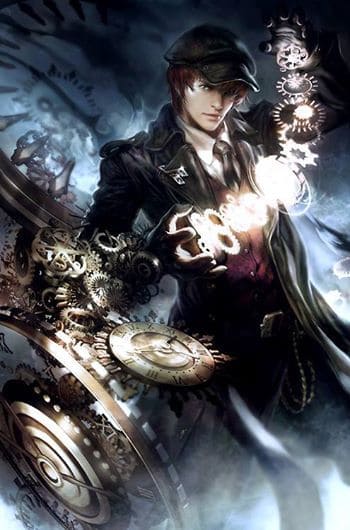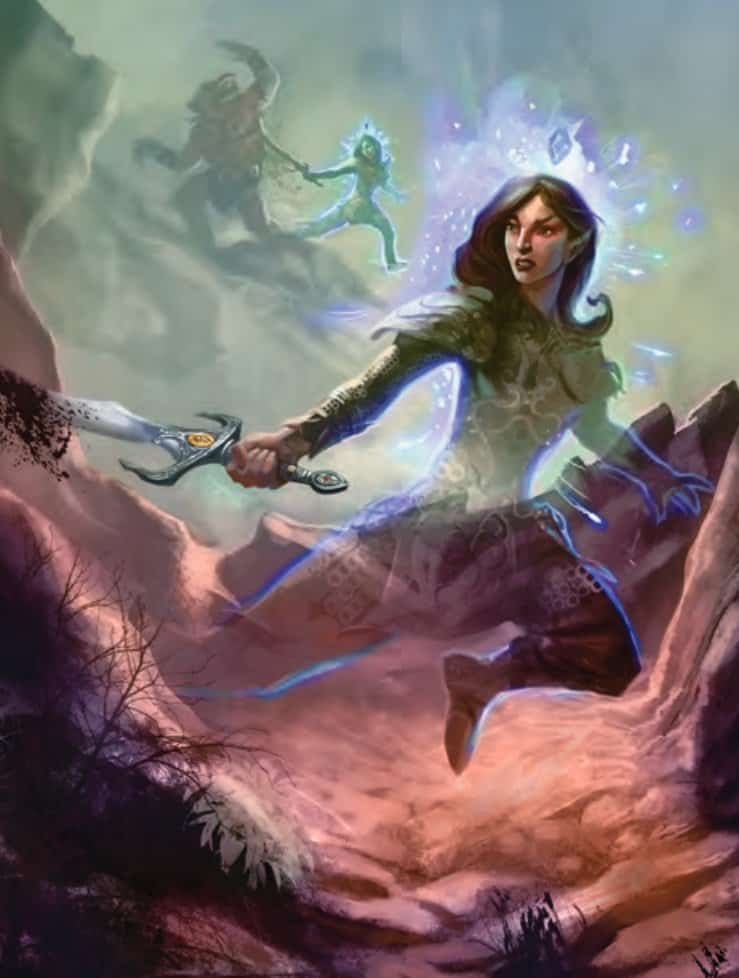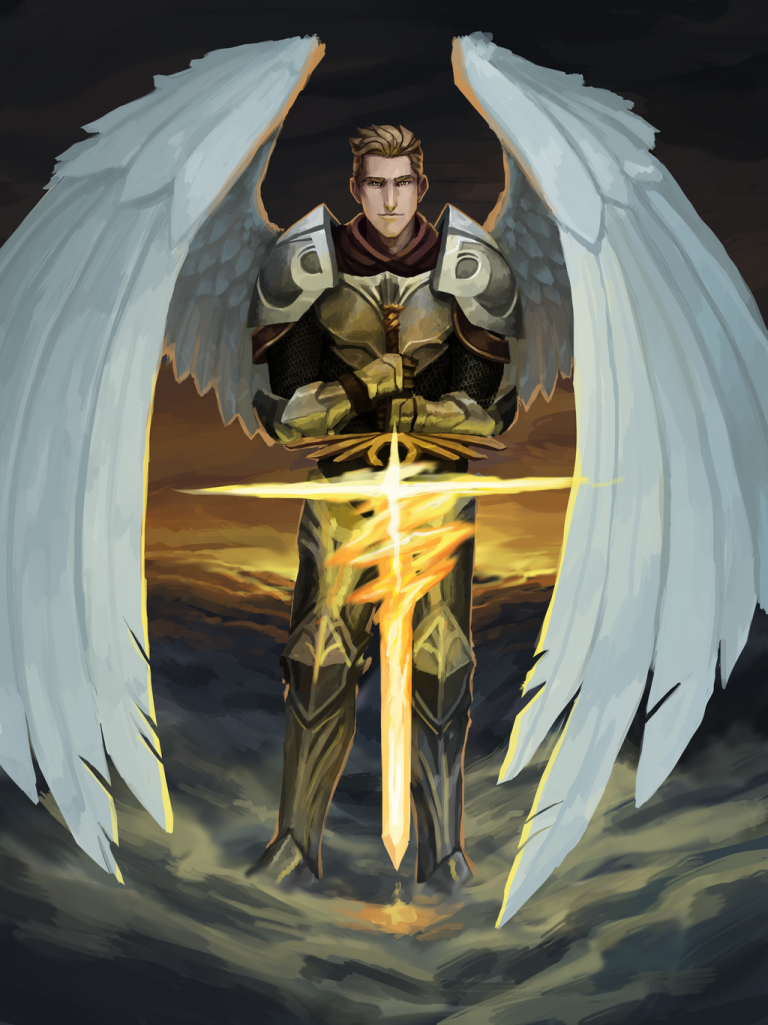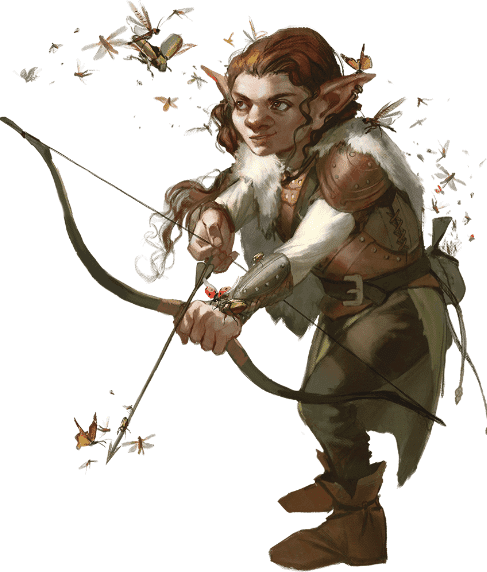D&D 5e: Oath of the Ancients Paladin Guide
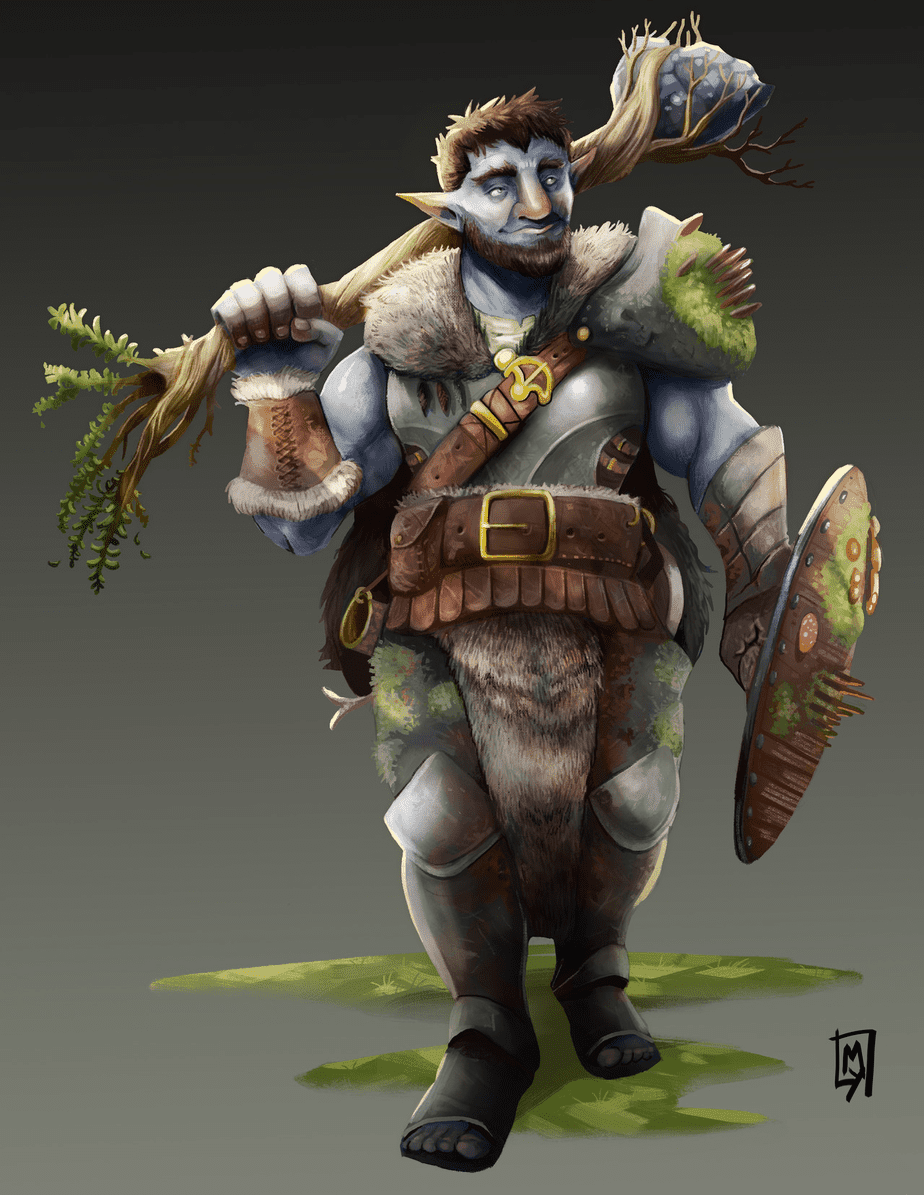
D&D 5e: Oath of the Ancients Paladin Guide
Role in the Party
The Oath of the Ancients Paladin is a subclass from the Player’s Handbook; at the time, it was a fairly popular paladin subclass, but I don’t see it discussed as often these days. The Ancients Paladin is one of the weaker paladins out there, but it still has some solid features.
The Ancients Paladin is a nature-themed paladin with tenets centered around doing good and being cheerful, but it has a reputation as a sort of anti-magic paladin due to its level 7 feature. It might be one of the most overrated paladin features out there, for reasons I’ll get into later.
Like most paladins, you will be a standard beefy damage dealer capable of some solid burst damage through smites. When your auras come online, allies can stand near you if they want saving throw boosts and resistance to some kinds of damage. The Ancients subclass won’t significantly change your role.
Epic
Good
Meh
Bad
The Oath of the Ancients Paladin subclass is found in the Player’s Handbook. Click here to pick up your own copy of the Player’s Handbook!
Oath of the Ancients Paladin Features
Oath Spells
You gain oath spells at the paladin levels listed.
3rd: Ensnaring Strike is an okay smite-like spell that does nothing if the enemy succeeds on their save, but inflicting the Restrained condition and requiring an action to escape is pretty good. This is normally ranger-only, so getting it on a paladin is nice. Speak with Animals is mostly a moderate utility option, but it’s still fun to have.
5th: Moonbeam costs your action every round, and you already have a very powerful attack action. Don’t use this unless you know every square of the beam will be filled with enemies every round. Misty Step is an amazing spell that you don’t normally get: it’s a short range teleport that can let you escape from numerous bad effects, including a dreaded Wall of Force, or teleport next to an enemy if you don’t have the movement speed to reach them.
9th: Plant Growth is an extremely powerful spell to use against land-based melee enemies, since creatures are drastically slowed while in the enormous area, and you can shape the spell so you and your allies can move normally while the enemy is slowed. Protection from Energy is circumstantial and expensive, but it can be useful if you want to protect an ally who doesn’t have Absorb Elements.
13th: Ice Storm is an underwhelming spell that doesn’t do a ton of damage or have a powerful secondary effect, and Stoneskin is an awful spell that barely protects the target from high CR monsters and costs your concentration and costs a bunch of money every time you use it.
17th: Commune With Nature is circumstantial but occasionally useful as a way to gather information, and Tree Stride is the worst teleportation spell in the game.
Channel Divinity
When you take this oath at 3rd level, you gain the following two Channel Divinity options.
Nature’s Wrath: You can use your Channel Divinity to invoke primeval forces to ensnare a foe. As an action, you can cause spectral vines to spring up and reach for a creature within 10 feet of you that you can see. The creature must succeed on a Strength or Dexterity saving throw (its choice) or be restrained. While restrained by the vines, the creature repeats the saving throw at the end of each of its turns. On a success, it frees itself and the vines vanish.
Turn the Faithless: You can use your Channel Divinity to utter ancient words that are painful for fey and fiends to hear. As an action, you present your holy symbol, and each fey or fiend within 30 feet of you that can hear you must make a Wisdom saving throw. On a failed save, the creature is turned for 1 minute or until it takes damage.
A turned creature must spend its turns trying to move as far away from you as it can, and it can’t willingly move to a space within 30 feet of you. It also can’t take reactions. For its action, it can use only the Dash action or try to escape from an effect that prevents it from moving. If there’s nowhere to move, the creature can use the Dodge action.
If the creature’s true form is concealed by an illusion, shapeshifting, or other effect, that form is revealed while it is turned.
Nature’s Wrath is awful: it’s like a worse version of Ensnaring Strike that lets the target pick between two ways of making the save and costs an action that you could have used to attack and the effect automatically provides a save every turn. Bleh. Just use Ensnaring Strike.
Turn the Faithless could be pretty good against Fey or Fiends… or it could do nothing against other creatures. Try and ask your dungeon master if there will be any eligible creatures in the campaign before you take this, or you’ll be left with two terrible Channel Divinity options.
Aura of Warding
Beginning at 7th level, ancient magic lies so heavily upon you that it forms an eldritch ward. You and friendly creatures within 10 feet of you have resistance to damage from spells.
At 18th level, the range of this aura increases to 30 feet.
Don’t get me wrong, this is a good feature; I want to resist the enemy’s Disintegrate or Fireball, and I want my allies to take less damage from these things. The main problem is that most of the time, the damage you and your allies take isn’t from a spell: it’s usually from some kind of attack or non-spell damaging effect. Lots of spells also don’t deal damage, and you also already have an aura that adds up to +5 to the saving throws of people within range of your Aura of Warding, so they were probably going to make their saves much more often against most of those spells anyway. Additionally, this is less useful if your allies have Absorb Elements since you can only apply one relevant resistance to a particular type of damage when you take it.
You’ll get a lot of use out of this feature for sure, and it’s infinite use, but it may be overrated by a lot of players.
Undying Sentinel
Starting at 15th level, when you are reduced to 0 hit points and are not killed outright, you can choose to drop to 1 hit point instead. Once you use this ability, you can’t use it again until you finish a long rest.
Additionally, you suffer none of the drawbacks of old age, and you can’t be aged magically.
You can take one extra source of damage per long rest and won’t die of old age. Meh.
Elder Champion
At 20th level, you can assume the form of an ancient force of nature, taking on an appearance you choose. For example, your skin might turn green or take on a bark-like texture, your hair might become leafy or moss-like, or you might sprout antlers or a lion-like mane.
Using your action, you undergo a transformation. For 1 minute, you gain the following benefits:
At the start of each of your turns, you regain 10 hit points.
Whenever you cast a paladin spell that has a casting time of 1 action, you can cast it using a bonus action instead.
Enemy creatures within 10 feet of you have disadvantage on saving throws against your paladin spells and Channel Divinity options.
Once you use this feature, you can’t use it again until you finish a long rest.
Every paladin gets a super mode they can activate at level 20, and this is a somewhat mediocre but ultimately useable choice. The best way to make use of this is to cast a spell as a bonus action every round, but you can only concentrate on one thing at a time, you’re only a half caster, and some spells were already bonus actions. This also costs an action to set up. You can still do some decent things with this like a bonus action plant growth on the same turn you set this up, but you’ll be burning through a lot of spell slots if you cast a spell every turn.
Strengths
Your subclass helps you against three things: fey, fiends, and damaging spells. If your campaign will have tons of either of these, you will feel more powerful. You can also teleport with Misty Step and have a few other solid oath spells. Even when your subclass isn’t doing anything for you, you can still benefit from the powerful Paladin core class features.
Weaknesses
When you aren’t fighting fey or fiends, the enemies aren’t using spells, and you don’t feel like teleporting, you’re mostly a paladin without a subclass. Because of this, your power is highly campaign dependent.
Best Race Options
Firbolg is an appropriate option thematically; you get a few nature-themed abilities, as well as Detect Magic, Disguise Self, and a bonus action one-round invisibility option. You can make a decent Ancients Paladin with this and contribute to a more subtle kind of party that prioritizes stealth and deception.
The two subraces of Gith live in the timeless Astral Plane, and it can be a pretty boring place sometimes. Perhaps your character is a Githzerai who left the Astral Plane and was finally exposed to the beauty of the Material Plane and/or Feywild and decided to stay there and protect this joyful world. Also, you get the Shield spell and Detect Thoughts; the former is the ultimate AC boosting spell and the latter is a fun out of combat option.
Forest Gnome is an unusual choice: Great Weapon Master probably isn’t going to be the feat for you, but if you move the ability scores around, this is actually a solid option regardless. Gnome Cunning will give you advantage on mental saves against magic, and the horrible conditions inflicted by these effects aren’t covered by your damage resistance: if you want another layer of protection against these, this is a solid race. Minor Illusion is also nice to have, and the subrace is fairly thematic.
Choosing the Right Skills
Unless you’re dipping Hexblade and focusing on Charisma, you want a high Athletics score to assist in resisting grapples and grappling enemies when needed.
You’ll also be called upon to do important Persuasion checks, and you could specialize in Deception or Performance if it fits your character. Intimidation might not be ideal for you since this subclass is more of a joyful sort of paladin, but you can pick it if you want.
Make sure to pick up Perception proficiency, since being surprised sucks and you also want to notice secrets and other details in the environment.
Lastly, you should at least consider Religion and/or Nature, since you’re a nature-themed subclass of a fairly religious class. You won’t be the best in the party even with proficiency, but you can be decent.
Fitting Feats
Paladins get extra mileage out of Polearm Master since more attacks mean more crits per day that can be taken advantage of with a smite, and the level 11 feature adds damage to each attack. This is a great feat at any level. Great Weapon Master is an excellent follow-up feat.
War Caster will let you cast most spells while using a shield and a weapon, and gives you advantage on saves to concentrate on those spells. You’re in melee a lot, so you’ll be hit a lot, and that will be a lot of DC 10 concentration saves. This feat is less mandatory if you’re going the heavy two-handed weapon route since you can let go of the weapon for a moment to cast a spell and don’t have to use an object interaction to stow your weapon.
If you went the Hexblade route and are an elf, you can take Elven Accuracy. Your own Ensnaring Strike might give you advantage, and everyone loves the Elven Accuracy’s triple advantage. You need to be attacking with Charisma to use this though unless you’re an unusual dex-based paladin build.
Optimal Backgrounds
Maybe you learned about the beauty of nature while living in the wilderness for an extended period of time, so the Outlander background might make sense for you. Being able to feed your friends when traveling is also nice.
Witherbloom Initiate will let your paladin learn about nature, life, and death, and their college education will give them the Strixhaven Initiate feat for free, which they will probably use to get the Shield spell.
Entertainer isn’t just for bards; it may be the perfect choice if you want to be a beacon of joy as a Paladin, and the Ancients oath tenets are a solid excuse to make this kind of character.
Multiclassing Options
A level of Hexblade at either level 1 for a full-charisma build or at 7-8 for a strength build is perfect. You get a big pile of goodies from a one level dip, and it’s an incredibly common dip on any paladin.
If you’re high level and have the dexterity and wisdom for it, a Ranger dip can be a great idea. Favored Foe is helpful if you have nothing to concentrate on at the moment, and there are numerous great subclasses, including the powerful Gloom Stalker. It’s also ideal if you want more mechanical ties to nature.
Swords Bard is a solid choice for higher levels; you can use Blade Flourishes on top of smites to deal immense damage on a crit, increase your great armor class with the Defensive Flourish, and you have powerful spells too. You also have mechanical ways of boosting your allies through happiness and joy thanks to spells and bardic inspiration.
Would I recommend playing an Oath of Ancients Paladin?
All paladins are solid choices, just because the core class features and optimization potential are both great. Even though Ancients is a more situational subclass, you’ll still be good when those situations won’t come up.
This is an excellent pick for a campaign with a lot of fey, fiends, and spellcasters, even if not every fight isn’t against one of those. The flavor of the Oath of Ancients also highly supports a more joyful sort of character than the Oath of Vengeance or some other paladin subclasses.



